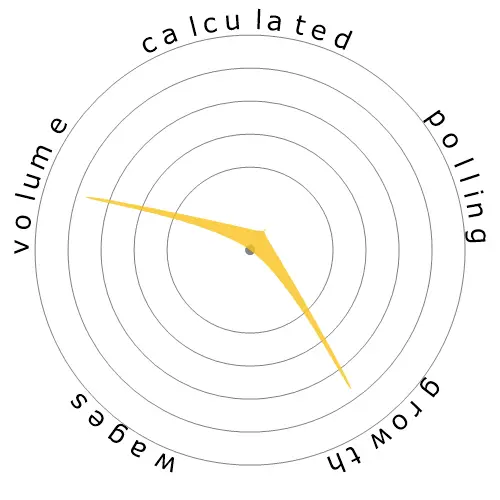Driver/Sales Workers




People also viewed
Calculated automation risk
Imminent Risk (81-100%): Occupations in this level have an extremely high likelihood of being automated in the near future. These jobs consist primarily of repetitive, predictable tasks with little need for human judgment.
More information on what this score is, and how it is calculated is available here.
User poll
Our visitors have voted that it's probable this occupation will be automated. This assessment is further supported by the calculated automation risk level, which estimates 93% chance of automation.
What do you think the risk of automation is?
What is the likelihood that Driver/Sales Workers will be replaced by robots or artificial intelligence within the next 20 years?
Sentiment
The following graph is included wherever there is a substantial amount of votes to render meaningful data. These visual representations display user poll results over time, providing a significant indication of sentiment trends.
Sentiment over time (yearly)
Growth
The number of 'Driver/Sales Workers' job openings is expected to rise 9.2% by 2033
Total employment, and estimated job openings
Updated projections are due 09-2025.
Wages
In 2023, the median annual wage for 'Driver/Sales Workers' was $35,420, or $17 per hour
'Driver/Sales Workers' were paid 26.3% lower than the national median wage, which stood at $48,060
Wages over time
Volume
As of 2023 there were 463,120 people employed as 'Driver/Sales Workers' within the United States.
This represents around 0.30% of the employed workforce across the country
Put another way, around 1 in 327 people are employed as 'Driver/Sales Workers'.
Job description
Drive truck or other vehicle over established routes or within an established territory and sell or deliver goods, such as food products, including restaurant take-out items, or pick up or deliver items such as commercial laundry. May also take orders, collect payment, or stock merchandise at point of delivery.
SOC Code: 53-3031.00


Comments
I think by 2040, the majority of cars on the road will be driven by AI.
And if you don't need human drivers, then trucks and lorries will not make sense from a business standpoint. So, I think large trucks will disappear and a large truck will be replaced with a fleet of smaller cars driven by AI artificial intelligence algorithms.
letters...
If a drone loses signal...what, hover in place with 500 other stones until the battery runs out, return to base, etc..
If the Earth's GPS coverage reaches 100% confidence over an entire delivery area then yes, automation, UNLESS the delivery is to a condo/apartment/mobile home park/ hotel or any delivery point that exists as one unit among many, all sharing the same street address. If these two issues are solved then yes, automation. If these issues persist it will delay implementation.
In sum, it could go either way.
Sincerely,
Heath Edwards
Multiple addresses in one place would also be handled initially by the human equivalent expedient of dumping the package at the apartment block door or leaving a "we missed you - come collect your package at the depot" postcard... given that the delivery times would probably still be faster there would be as few complaints as now (and it would get blamed on software errors instead of shuffling the human to a different route).
This might improve with new buildings with drone landing pads on the roof with special recepticles might well become the norm, proving safer for the incoming packages as well as not having to go to the depot to collect packages that could not be delivered because you weren't in.
Leave a reply about this occupation